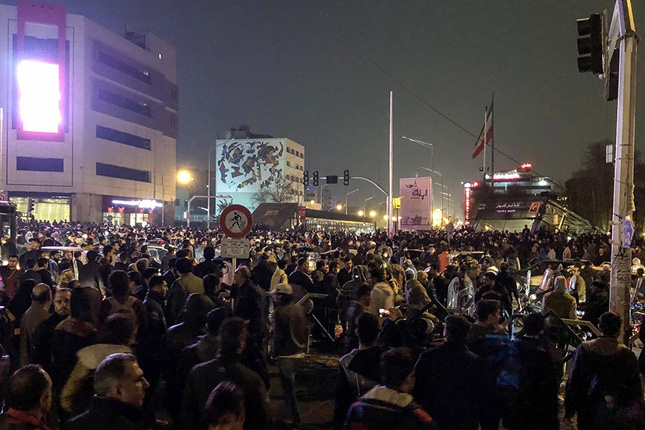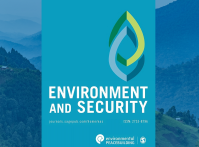-
Uncomfortable Companions: Fertility Decline and Ideology in Iran
March 5, 2018 By Richard Cincotta
It should be an excellent time to be a young Iranian: High school and college enrollments in the Islamic Republic rank near the top of Muslim-majority countries. Women have only about two children on average, compared to 6.5 in the mid-1980s. And childhood mortality is projected to approach North American levels in the next 15 years. Yet, as the recent protests show, many young Iranians feel left out. Job growth—especially for young adults—has failed to keep pace with development, while persistently high rates of inflation steadily drive up the cost of living and cut deeply into Iranians’ savings.
Clearly, young Iranians expect more from their country’s economy. They aren’t alone. In Iran in Transition, a recent report published by the Carnegie Endowment for International Peace, Karim Sadjadpour and I show that Iran is traversing its demographic window of opportunity—an economically advantageous period marked by small proportions of dependent children and seniors, and a large proportion in the most productive working ages. In fact, Iran’s current worker bulge rivals those that helped make “economic tigers” out of Japan, South Korea, Singapore, Taiwan, Thailand, and China.

However, Iran’s ideological hard liners have repeatedly failed to take advantage of the opportunities offered by its remarkable decline in fertility—and thus have not followed in the lucrative footsteps of its East Asian neighbors. As fertility declined and education attainment rose, East Asian countries opened their growing economies and educated workforces to the West’s capital and markets. Governments entered into high-tech partnerships with foreign firms, imported technologies, encouraged private sector innovation, and helped workers save and invest their earnings. By the mid-1990s, China’s communist government had toned down its revolutionary rhetoric, dropped its support of Maoist insurgencies overseas, and embraced state capitalism.
In contrast, Tehran’s clerical regime continues to export its revolutionary ideology and spend down its revenue by saturating the Middle East with arms. Antagonized by the Islamic Republic’s nuclear ambitions and its sponsorship of insurgents, Western governments have imposed trade and financial sanctions limiting Tehran’s economic power and diplomatic influence. International sanctions have also crippled the Islamic Republic’s ability to develop technological partnerships, expand jobs for skilled workers, and stimulate domestic savings and investment. Rather than strengthen its private sector, the regime has capitalized firms controlled by the Islamic Revolutionary Guard Corps.
Even Iran’s accomplishments have been subverted by the political hardlinersEven Iran’s accomplishments have been subverted by the political hardliners who dominate the state’s most coercive institutions. Although Iran has conducted a successful needle-exchange program for more than a decade, security officials periodically shut down HIV information campaigns and arrest activists and physicians. Between 2012 and 2014, Iran eliminated state-subsidized contraceptive services, outlawed sterilization, and ended its progressive pre-marriage counseling program. And while more women attend college than men in Iran, state universities restrict women from enrolling in some technical programs.
Having missed the demographic window, Iran’s parliament seems bent on exacerbating the looming challenges of its aging population by forestalling much-needed pension reforms. Few social insurance systems are as poorly designed and improperly managed as Iran’s, yet only about nine percent of the Islamic Republic’s citizens qualify for retirement, limiting the fiscal damage. But the number of retirees is growing rapidly; unless retirement ages are adjusted upward, about one in every four Iranians will qualify for retirement by 2045.
Population aging has weighty political implications, too. As Iran’s working population grows older, it will yield a more mature and well-educated society—one that may have greater hopes for political reform, but have a lower tolerance for risky, violent confrontations with the regime. Thus, as Iran’s population ages, the clerics’ ideological monopoly becomes less likely to be upset by a youth-led (Arab Spring-style) uprising. Instead, any real challenges to clerical power will more likely require the rise of a popular reformer from within the system–someone like Gorbachev, for example—and perhaps even a crisis at the top of the clerical regime.
This forecast sharply diverges from the expectations of many Middle East analysts, whose hopes for a popular revolution in Iran only grow stronger with each series of youth-led demonstrations. While Iran’s current age structure is similar to other countries—such as South Korea, Taiwan, Brazil, Chile, and Tunisia—at the time that they successfully transitioned to liberal democracy, prior research shows that ideologically parochial autocracies, like Iran’s (or China’s, Cuba’s, or North Korea’s), have proved notoriously immune to the demographically timed pressures on their regimes.
The rising expectations of Iran’s increasingly well-educated young men and women produce a shaky foundation on which to maintain a revolutionary Islamic society. Yet, despite the divergence of Iranian society and polity, it would be unwise to underestimate the staying power of a state so firmly rooted in its ideology. Political demographers have learned this lesson before: If demography deals out destiny, ideology is surely its trump card.
Richard Cincotta is a global fellow at the Wilson Center and non-resident fellow at the Stimson Center.
Sources: Carnegie Endowment for International Peace, Foreign Affairs
Photo Credit: Protests in Tehran, December 2017, photo by Fars News
Topics: democracy and governance, demography, featured, Guest Contributor, Iran, population, security, youth
 A Publication of the Stimson Center.
A Publication of the Stimson Center.








